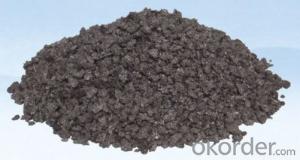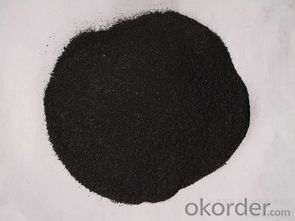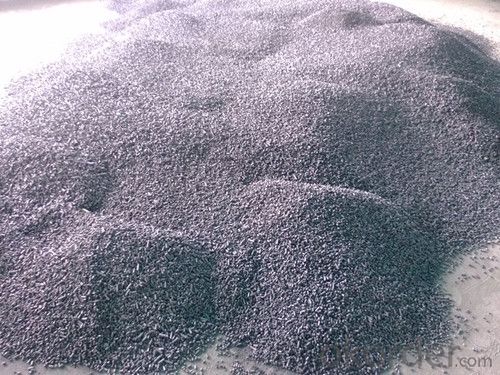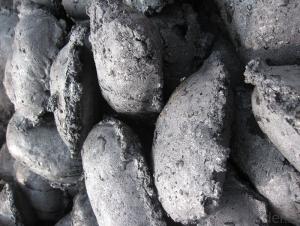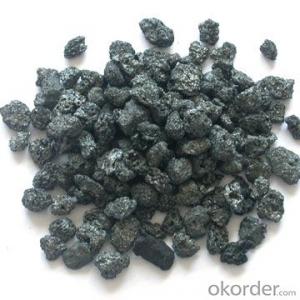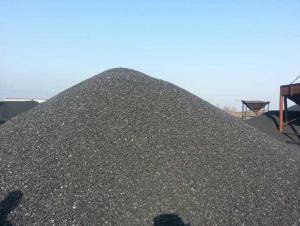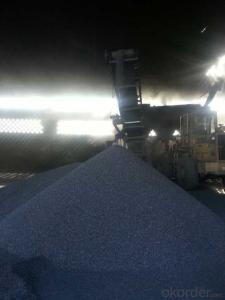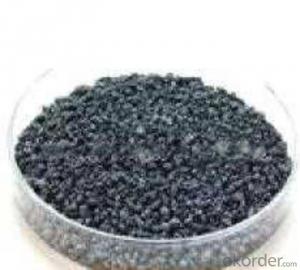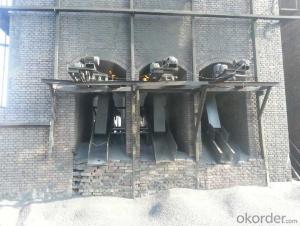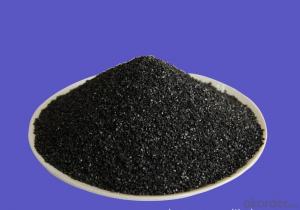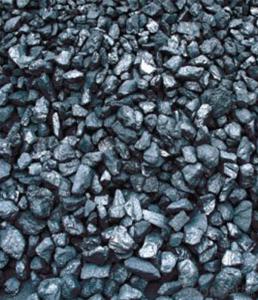FC90 Calcined Anthracite For Steel Making
- Loading Port:
- Tianjin
- Payment Terms:
- TT OR LC
- Min Order Qty:
- 0 m.t.
- Supply Capability:
- 100000 m.t./month
OKorder Service Pledge
OKorder Financial Service
You Might Also Like
Packaging & Delivery
Packaging Detail: | 25kgs/50kgs/1ton per bag or as buyer's request |
Delivery Detail: | Within 20 days after receiving corect L/C |
Specifications
Calcined Anthracite
Fixed carbon: 90%-95%
S: 0.5% max
Size: 0-3. 3-5.3-15 or as request
Feature
All of our goods are made in the best quality of world famous Tianjin. All of our products are with High carbon, Low ash, low sulphur, Low Moisture.
Application
The Calcined Anthracite Coal/Gas Calcined Anthracite Coal/Carbon Raiser is mainly used in steelmaking in electrical stove, screening water, shipbuilding sandblast to remove rust. It can reduce the cost of steelmaking effectively by replacing the traditional petroleum coke of carburant.Also can improve the Carbon content in steel-melting and Ductile iron foundry.
Specifications
Calcined Anthracite
Fixed carbon: 90%-95%
S: 0.5% max
Size: 0-3. 3-5.3-15 or as request
PARAMETER UNIT GUARANTEE VALUE | |||||
F.C.% | 95MIN | 94MIN | 93MIN | 92MIN | 90MIN |
ASH % | 4MAX | 5MAX | 6MAX | 7MAX | 8MAX |
V.M.% | 1 MAX | 1MAX | 1.5MAX | 1.5MAX | 1.5MAX |
SULFUR % | 0.5MAX | 0.5MAX | 0.5MAX | 0.5MAX | 0.5MAX |
MOISTURE % | 0.5MAX | 0.5MAX | 0.5MAX | 0.5MAX | 0.5MAX |
Size can be adjusted based on buyer's request.
Picture
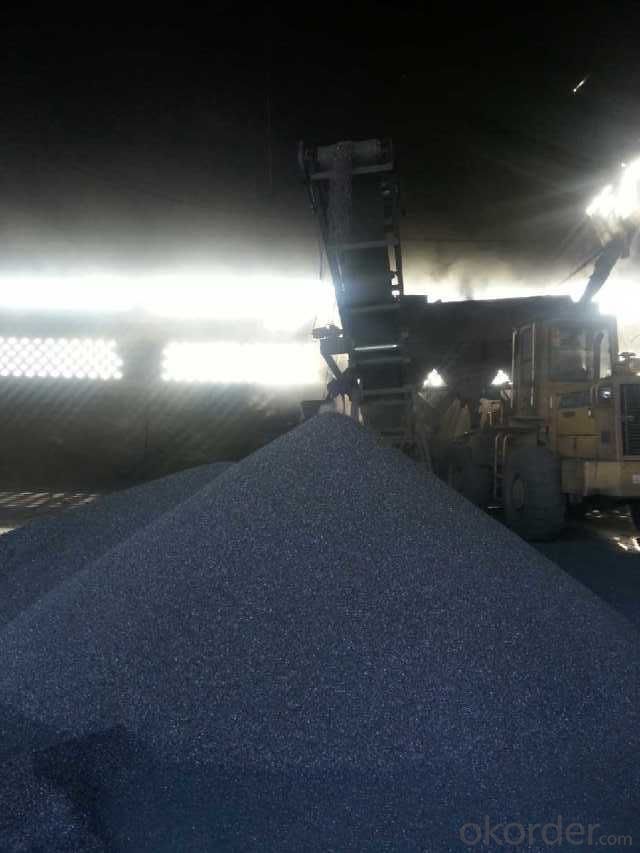
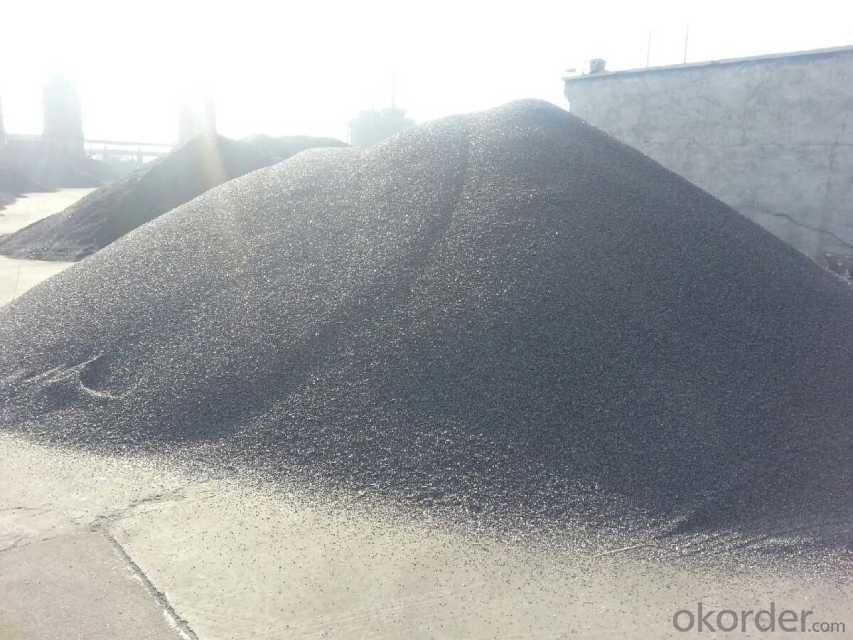
- Q: What is the starting temperature and final forging temperature of carbon steel?
- The forging temperature range should be as wide as possible, to reduce forging times, improve productivity.1. initial forging temperatureInitial forging temperature is blank began forging temperature should be understood as the highest heating temperature allows steel or alloy in the heating furnace. The furnace before removing from the blank to the forging equipment to forging blank, blank size according to the delivery method and heating furnace and forging a distance between the equipment, there are a few blank tens of degrees of temperature drop. Therefore, really began forging a low temperature, the initial forging blank before, should try to reduce the temperature drop.
- Q: I don't know the battery. Although I know the former is chemical energy, I want to know if the 1 grain size 5 can compare the charge capacity with the 1 grain 5 1ANot much of a fortune, but thank you very much for the enthusiastic friend who gave me the answer. Thank you!
- Note:The above parameter is the mean under the condition that no virtual object is includedAA's battery is size five (diameter 14mm, height 50mm)According to your description, what you mean by "capacitance" is power, which is the actual amount of electricity in the battery.Correct you a misunderstanding, that is, whether it is a one-time battery or lithium battery, rechargeable batteries (nickel hydrogen) are chemical batteries.AA disposable lithium iron batteries have made us resistant and energizer L91, prices in the 2-30 yuan a day before, regardless of the brand and price, the actual consumption of almost all.Hand hit, reference material is "flashlight everybody talks about" Forum
- Q: Which is better, 13 and 14 carbon breath tests?
- The following is the range of feesC14- carbon 14 breath test, each province Price Bureau regulations are different, 95-120 yuanC13- carbon 13 breath test, 150-220 yuan
- Q: How do plants and trees absorb carbon dioxide?
- Plants and trees absorb carbon dioxide through a process called photosynthesis. During photosynthesis, they use sunlight, water, and chlorophyll to convert carbon dioxide into glucose and release oxygen as a byproduct. This helps in reducing the amount of carbon dioxide in the atmosphere and contributes to maintaining a balance in the Earth's carbon cycle.
- Q: Recently bought an alarm clock, it is recommended to use carbon batteries. Nanfu battery is not good for the movement.
- Nanfu is generally alkaline battery, the alarm clock movement, the power is too large, will damage the movement. Supermarkets generally have many brands of carbon batteries, you can follow their favorite and ability to buy. There are deer, wild horses, PHILPS and so on.
- Q: What are the consequences of increased carbon emissions on indigenous communities?
- Increased carbon emissions have severe consequences on indigenous communities. One of the most immediate impacts is the degradation of their traditional lands and natural resources. Carbon emissions contribute to global warming, leading to rising temperatures, changing weather patterns, and more frequent and intense natural disasters such as hurricanes, droughts, and wildfires. These events can destroy crops, damage infrastructure, and displace indigenous peoples from their ancestral territories. Moreover, carbon emissions contribute to air pollution, which disproportionately affects indigenous communities who often live near industrial facilities and are exposed to higher levels of toxic pollutants. This can lead to respiratory illnesses, cardiovascular diseases, and other health issues, exacerbating existing health disparities. The loss of biodiversity caused by climate change also affects indigenous communities who rely on traditional knowledge and practices for sustainable resource management. Changes in ecosystems disrupt the availability and abundance of food, water, and medicinal plants, undermining indigenous cultures and traditional livelihoods. Furthermore, many indigenous communities are highly dependent on natural resources for economic development, such as fishing, hunting, and agriculture. With increased carbon emissions, these resources become scarcer and less reliable, posing economic challenges and creating financial insecurity for indigenous communities. In addition to these environmental and economic consequences, increased carbon emissions also contribute to the loss of cultural heritage and identity. Indigenous communities have a deep connection to their territories and the natural world, which is threatened by the impacts of climate change. This loss of cultural heritage is not only detrimental to indigenous communities but also to humanity as a whole, as it diminishes the diversity of human knowledge and perspectives. Overall, the consequences of increased carbon emissions on indigenous communities are wide-ranging and severe. They not only undermine their traditional lands, resources, and health but also erode their cultural heritage and identity. Recognizing and addressing these impacts is crucial to ensure the protection and well-being of indigenous communities and to mitigate the effects of climate change on a global scale.
- Q: What is the carbon footprint of different activities?
- The release of greenhouse gas emissions, specifically carbon dioxide (CO2), into the atmosphere as a consequence of conducting various activities defines the carbon footprint. It gauges the impact exerted by these activities on climate change. Numerous activities contribute to our carbon footprint, encompassing transportation, energy utilization, food production, and waste management. The carbon footprint associated with each activity can significantly differ depending on factors like energy source type, technological efficiency, and individual choices. Transportation serves as a major contributor to carbon emissions, with cars, planes, and ships serving as primary sources. The employment of fossil fuels in these modes of transportation results in CO2 emissions. The carbon footprint of transportation is determined by vehicle type, fuel efficiency, and travel distance. Energy utilization stands as another significant contributor, particularly in the context of electricity generation. The burning of fossil fuels, such as coal and natural gas, for electricity production leads to the release of CO2. However, renewable energy sources such as wind, solar, and hydroelectric power exhibit a lower carbon footprint as they do not emit greenhouse gases during operation. Food production, often disregarded, possesses a substantial carbon footprint. The agricultural practices involved in cultivating, processing, packaging, and transporting food contribute to emissions. Additionally, livestock farming, notably beef and lamb, generates significant amounts of methane, a potent greenhouse gas. Waste management also contributes to carbon emissions, primarily through the decomposition of organic waste in landfills. As organic waste undergoes decomposition, it produces methane. Employing proper waste management techniques like composting and anaerobic digestion can aid in reducing these emissions. It is essential to acknowledge that the carbon footprint of activities can be diminished through a range of measures. Embracing energy-efficient technologies, opting for public transportation or carpooling, selecting renewable energy sources, adopting a more sustainable diet, and practicing proper waste management all serve as avenues for minimizing our carbon footprint. Comprehending the carbon footprint associated with diverse activities enables individuals, businesses, and governments to make well-informed decisions and undertake necessary actions to curb climate change. By reducing our carbon footprint, we can contribute to a future that is more sustainable and environmentally friendly.
- Q: How does carbon affect the electrical conductivity of materials?
- Carbon can significantly affect the electrical conductivity of materials due to its unique electronic properties. Carbon atoms, when bonded together in a specific arrangement, can form different allotropes such as graphite, diamond, and fullerenes, each with distinct electrical conductive properties. Graphite, for example, is composed of layers of carbon atoms arranged in a hexagonal lattice structure. Within each layer, carbon atoms form strong covalent bonds, resulting in a stable structure. However, between the layers, weak van der Waals forces exist, allowing for easy movement of electrons in the plane of the layers. This delocalization of electrons in graphite leads to its high electrical conductivity, as the free electrons can move freely and carry electrical charges. On the other hand, diamond, another allotrope of carbon, has a three-dimensional covalent network structure. In this structure, each carbon atom forms four strong covalent bonds with its neighboring atoms, resulting in a highly rigid and stable lattice. The absence of free electrons in diamond restricts the movement of electrical charges, making it an insulator. Fullerenes, which are spherical carbon molecules, can have varying electrical conductive properties depending on their structure. Some fullerenes can behave as semiconductors, meaning their electrical conductivity can be manipulated by introducing impurities or applying external stimuli. In addition to these allotropes, carbon can also be used as a dopant in certain materials to enhance their electrical conductivity. For instance, doping silicon with small amounts of carbon can improve its electrical conductivity, resulting in materials suitable for electronic devices. Overall, carbon's influence on electrical conductivity is highly dependent on its structure and arrangement within a material. Understanding the different forms and properties of carbon can help engineers and scientists design materials with desired electrical conductive characteristics for various applications.
- Q: What are the impacts of carbon emissions on the stability of grasslands?
- The stability of grasslands is significantly affected by carbon emissions. When carbon dioxide (CO2) is released into the atmosphere, it contributes to the greenhouse effect and causes global warming. This rise in temperature has various harmful consequences for grasslands. To begin with, higher temperatures can disrupt the equilibrium of grassland ecosystems. Many grassland species require specific temperatures for their growth and reproduction. As temperatures increase, these species may struggle to adapt, resulting in a decline in their populations. This disruption can negatively impact the overall biodiversity and ecological stability of grasslands. Additionally, global warming can change precipitation patterns, leading to alterations in water availability in grasslands. Reduced rainfall or increased evaporation can create drought conditions, making it challenging for grasses to flourish. This can ultimately cause grasslands to transform into barren areas devoid of plant life, a process known as desertification. Moreover, carbon emissions contribute to the acidification of the oceans, which indirectly affects grasslands. Acidic ocean waters impact marine organisms, including those responsible for generating nutrients that are carried by winds to coastal and inland grasslands. If these nutrient sources decline, grasslands may experience reduced fertility and productivity, ultimately affecting the stability of these ecosystems. Lastly, carbon emissions can worsen the frequency and intensity of wildfires. Grasslands are naturally adapted to periodic fires, which play a vital role in maintaining biodiversity and regulating plant populations. However, the increase in carbon dioxide levels can fuel more severe and frequent wildfires, leading to the destruction of grasslands and making their recovery more challenging. In conclusion, carbon emissions have numerous negative impacts on grassland stability. They disrupt the balance of grassland ecosystems, change precipitation patterns, contribute to ocean acidification, and increase the risk of wildfires. These effects can result in biodiversity loss, desertification, reduced fertility, and overall instability in grassland ecosystems. It is essential to reduce carbon emissions and mitigate the consequences of global warming to ensure the long-term stability and preservation of grasslands.
- Q: How does carbon dioxide affect the formation of smog?
- Smog formation is not directly caused by carbon dioxide (CO2). Instead, it is primarily a result of sunlight interacting with other pollutants like nitrogen oxides (NOx) and volatile organic compounds (VOCs). These pollutants are emitted from various sources such as vehicles, industrial processes, and power plants. However, even though carbon dioxide doesn't directly participate in smog formation, it does have a significant impact on climate change. CO2 is a greenhouse gas, which means it traps heat in the Earth's atmosphere and contributes to global warming. As the planet warms, weather patterns can change, leading to more stagnant air conditions that worsen smog formation. Furthermore, the burning of fossil fuels, which releases carbon dioxide, is a major source of air pollutants like NOx and VOCs. So while CO2 itself may not directly cause smog, the activities that release CO2 indirectly contribute to smog formation by releasing other pollutants involved in its creation. Therefore, the influence of carbon dioxide on smog formation is indirect, primarily through its contribution to climate change and the release of other pollutants. By reducing carbon dioxide emissions and transitioning to cleaner energy sources, we can help mitigate climate change and indirectly decrease the factors contributing to smog formation.
Send your message to us
FC90 Calcined Anthracite For Steel Making
- Loading Port:
- Tianjin
- Payment Terms:
- TT OR LC
- Min Order Qty:
- 0 m.t.
- Supply Capability:
- 100000 m.t./month
OKorder Service Pledge
OKorder Financial Service
Similar products
Hot products
Hot Searches
